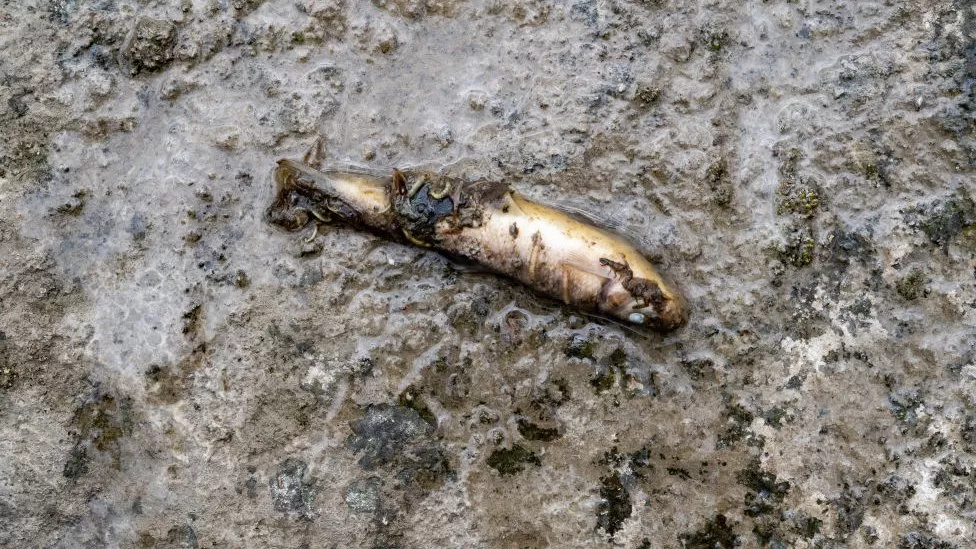Nearly 45,000 animals have died as a result of a toxic train crash this month in an Ohio town, environmental officials have said.
The figure from the Ohio Department of Natural Resources updates the initial estimate of 3,500 animals dead after the 3 February derailment.
The toll was all recorded within a 5-mile (8km) radius of the crash site, officials said.
Clean-up efforts continue in East Palestine amid a federal inquiry.
A total of 38 cars derailed in the crash, 11 of which were carrying hazardous materials. Residents later reported feeling unwell.
Mary Mertz, who directs the Ohio Department of Natural Resources (ODNR), said in a news conference on Thursday that all of the 43,700 animals found dead were aquatic species, and that there is no evidence that any terrestrial animals were killed by the train’s chemicals.
None of the animals were believed to be endangered or threatened species. Some live fish have already been seen returning to one of the waterways affected by the train derailment, she said.
There is no sign that any of the chemicals have killed animals in the nearby Ohio River, she said.
“Because the chemicals were contained, we haven’t seen any additional signs of aquatic life suffering,” she said, adding that all of the deaths occurred immediately after the crash three weeks ago.
Also on Thursday, the National Transportation Safety Board (NTSB) said the crew of the train had tried to slow it down moments before the crash after finding that a wheel bearing had heated up.
Shortly before the derailment, it reached a “threshold” level of 253 degrees Fahrenheit above normal temperature, the NTSB’s preliminary report said.
As the train driver applied the brakes, an automatic braking system was also initiated, allowing the train to stop, according to the NTSB.
“After the train stopped, the crew observed fire and smoke,” the report said.
The report found no evidence that the train was travelling above the speed limit of 50mph (80km/h).
It provided few details as to what exactly caused the derailment.
At a news conference in Washington DC, NTSB chair Jennifer Homendy said that the crash was “100% preventable”.
“We call things accidents,” she said. “There is no accident. Every single event we investigate is preventable.”
A final report will likely take between 12 and 18 months, Ms Homendy said.
Fires at the derailment site were contained by 5 February, but authorities remained concerned that five cars carrying 115,580 gallons (437,500 litres) of vinyl chloride – an odourless gas used to make PVC – might explode.
So officials conducted a controlled burn of the substance, sending a huge plume of black smoke over East Palestine.
Media caption,
Washing fruit with bottled water: How one family is dealing with the aftermath
The NTSB said that its probe is ongoing and that investigators will focus on the wheels and tank car design, as well as on the burning of the vinyl chloride and accident response.
The firm that operated the train, Norfolk Southern, has defended its response.
Speaking to CNN on Wednesday, CEO Alan Shaw said the company had already paid $6.5m (£5.4m) to residents living near the scene.
Also on Thursday, US Transportation Secretary Pete Buttigieg visited East Palestine, after acknowledging earlier this week he “could have spoken sooner” about the incident.
He has become a lightning rod amid local frustration at official handling of the derailment.
Speaking to reporters in East Palestine, Mr Buttigieg blamed Norfolk Southern and the administration of former President Donald Trump, which he said had loosened railroad regulations.
Bbc
Tags:train




